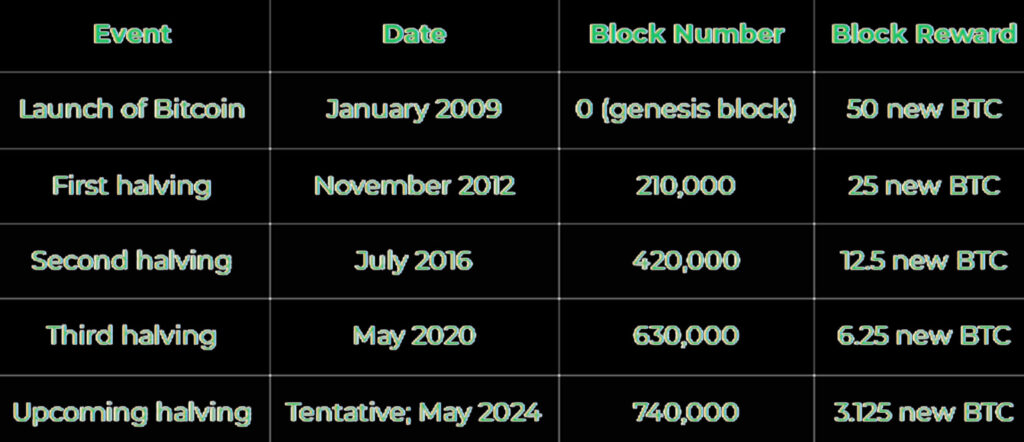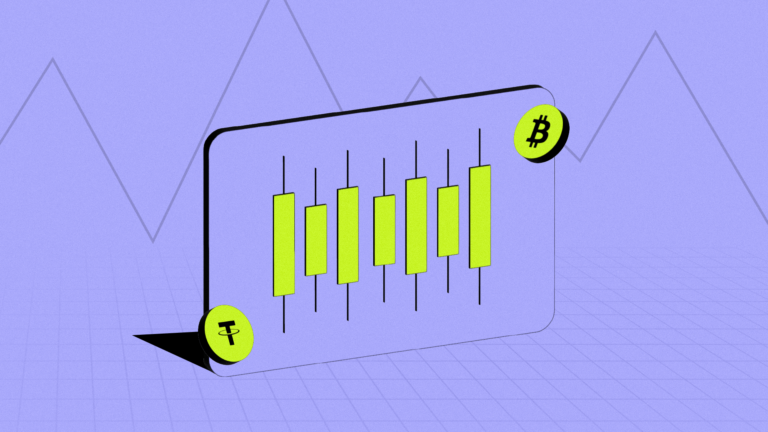Changes in the domain of Bitcoin, the oldest and most embraced cryptocurrency, are widely acknowledged due to its amalgamation of economic incentives, sophisticated cryptography, a novel consensus protocol, and a distinct monetary policy. Consequently, it has evolved into an unparalleled and superior form of currency.
The extended evolution of Bitcoin’s value encompasses a pivotal concept known as Bitcoin Halving, a mechanism inducing disinflationary pressure on Bitcoin. This article aims to delve deeply into Bitcoin halving, comprehending its significance within the Bitcoin network, and exploring its potential impacts on Bitcoin mining and pricing.
Bitcoin Mining & Bitcoin Halving
Before delving into advanced concepts like Bitcoin halving, understanding the fundamental workings of the network—Bitcoin mining—is imperative.
Bitcoin operates through a decentralized blockchain network and its token, BTC. The unique consensus mechanism employed by the Bitcoin network for transaction validation is proof-of-work (PoW), a system that introduces the concept of Bitcoin mining. Miners, nodes within the network, solve intricate mathematical problems to validate transactions, earning new BTC units as rewards.

The Bitcoin network undergoes a recurring event termed “Bitcoin halving” every 210,000 mined blocks, roughly occurring every four years. This event automatically diminishes the quantity of Bitcoins released into circulation by halving the reward for successfully mining new blocks.
Since Bitcoin’s inception, three halvings have gradually reduced block rewards from 50 BTC to the current 6.25 BTC, with the most recent halving occurring in 2020.
Impact of Bitcoin Halving on Mining
Here is a brief overview of the significant impacts of Bitcoin halving on Bitcoin mining:
▪️ Reduced Income: Miners now receive 50% fewer rewards for validating transactions, significantly affecting profitability, especially for miners with higher operational costs.
▪️ Heightened Competition: Declining rewards prompt miners to intensify efforts, upgrade equipment, and seek more cost-effective locations. This fosters a competitive environment necessitating constant scalability and efficiency enhancements to remain viable.
▪️ Supply Effect: Decreasing the rate of new bitcoins in circulation, Bitcoin halving contributes to the cryptocurrency’s scarcity. Scarcity often drives up Bitcoin prices, potentially offsetting the reduced block rewards for miners.
▪️ Historical Price Surge: Past Bitcoin halving events have led to substantial price increases. Limited supply and reduced miner revenue frequently caused significant spikes in Bitcoin prices.
▪️ Mitigation Strategies: Miners adopt various techniques to mitigate halving effects, including enhancing productivity, embracing sustainable energy sources, and diversifying income streams. Effectively managing market volatility becomes crucial for miners navigating the ever-changing crypto-mining landscape.
Impact of Bitcoin Halving on Mining Rewards
A pivotal concept in Bitcoin’s tokenomics is halving, maintaining a maximum supply of 21 million coins while steadily introducing new coins until the 32nd halving in 2140. Beyond this, Bitcoin production ceases, and miners cease to be rewarded with freshly created Bitcoin.

Transaction fees paid by users will serve as miners’ rewards post reaching the supply limit, potentially leading to increased fees due to rising on-chain transactions, motivating miners to sustain network maintenance.
Impact of Bitcoin Halving on Bitcoin’s Price
Three Bitcoin halving events have occurred, with another expected in 2024. Historical data indicates a substantial effect of halving events on Bitcoin prices. The relationship between Bitcoin halving and BTC price is intricate:
▪️ Supply-Demand Dynamics: Slowing down the creation of new BTCs through halving reduces the total supply, potentially causing price spikes if demand remains steady or rises.
▪️ Driven Demand with Market Anticipation: Speculation preceding halving events often leads to increased demand as participants anticipate price surges due to reduced supply.
▪️ Historical Price Trends: Previous halvings in 2012 and 2016 resulted in significant price spikes for Bitcoin. While past performance doesn’t guarantee future outcomes, historical trends may influence investment decisions, impacting the market.
▪️ Selling Pressures on Miners: Reduced block rewards may prompt miners to sell some holdings to cover operational costs if Bitcoin prices don’t compensate for diminished rewards, potentially affecting BTC price.
▪️ Market Sentiments: Halving events can influence market sentiment, attracting more buyers due to positive sentiments related to scarcity and potential future price appreciation.
Is Bitcoin Halving Beneficial or Detrimental?
Bitcoin halving is a significant and impactful event. Positively, it reduces the creation rate of new Bitcoins, augmenting the cryptocurrency’s scarcity and potentially increasing its value over time. The convergence of market anticipation and scarcity often piques investor interest. Additionally, halving promotes mining efficiency, ensuring sustainable and cost-effective operations.
However, short-term market volatility may impact traders and investors, while miners may face concerns regarding reduced profitability due to lower mining rewards.
Ultimately, the perspective determines whether Bitcoin halving is advantageous or disadvantageous. Short-term participants must navigate market risks and uncertainties, whereas long-term investors may recognize the potential for increased value.
Conclusion
An integral facet of Bitcoin’s economic model is its halving, attracting investors by imposing disinflationary pressure. The inclination of users to hoard Bitcoin for potential price appreciation has drawn criticism, undermining its utility as a transactional currency. This phenomenon, often termed “HODLing,” has led some to view Bitcoin more as an investment than a medium of exchange.
Different individuals perceive Bitcoin halving’s impact diversely, with some considering it a distinctive feature while others highlight possible drawbacks. Its influence on Bitcoin’s sustainability and value underscores the intricate relationship between market forces, mining dynamics, and economic principles.
To learn more about Bitcoin Halving, go check out SunCrypto Academy.
Disclaimer: Crypto products and NFTs are unregulated and can be highly risky. There may be no regulatory recourse for any loss from such transactions. All content provided is for informational purposes only, and shall not be relied upon as financial/investment advice. Opinions shared, if any, are only shared for information and education purposes. Although the best efforts have been made to ensure all information is accurate and up to date, occasionally unintended errors or misprints may occur. We recommend you please do your own research or consult an expert before making any investment decision. You may write to us at [email protected].






Nice work